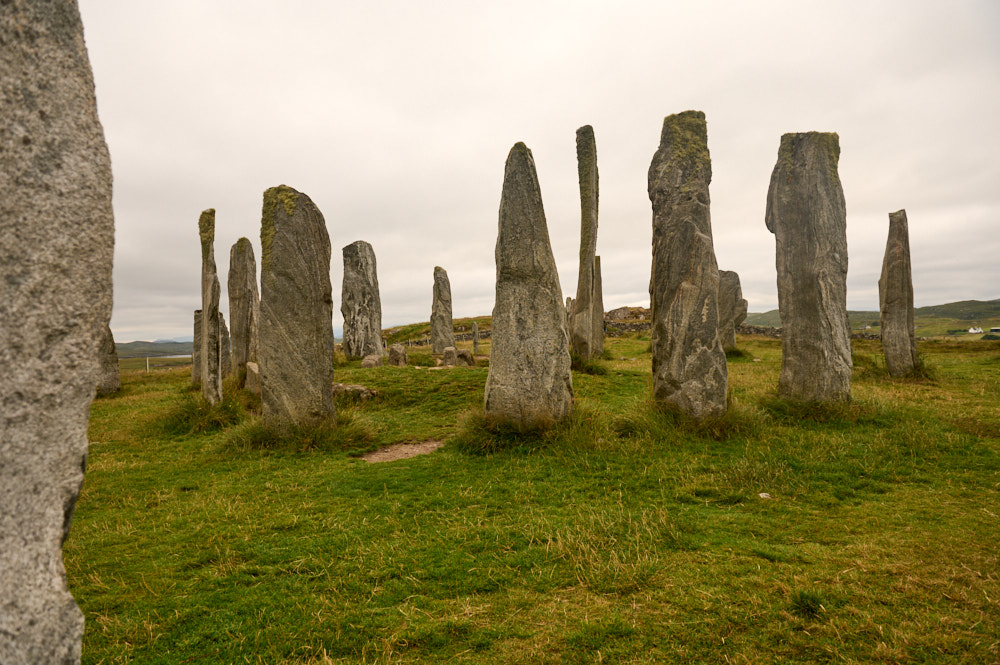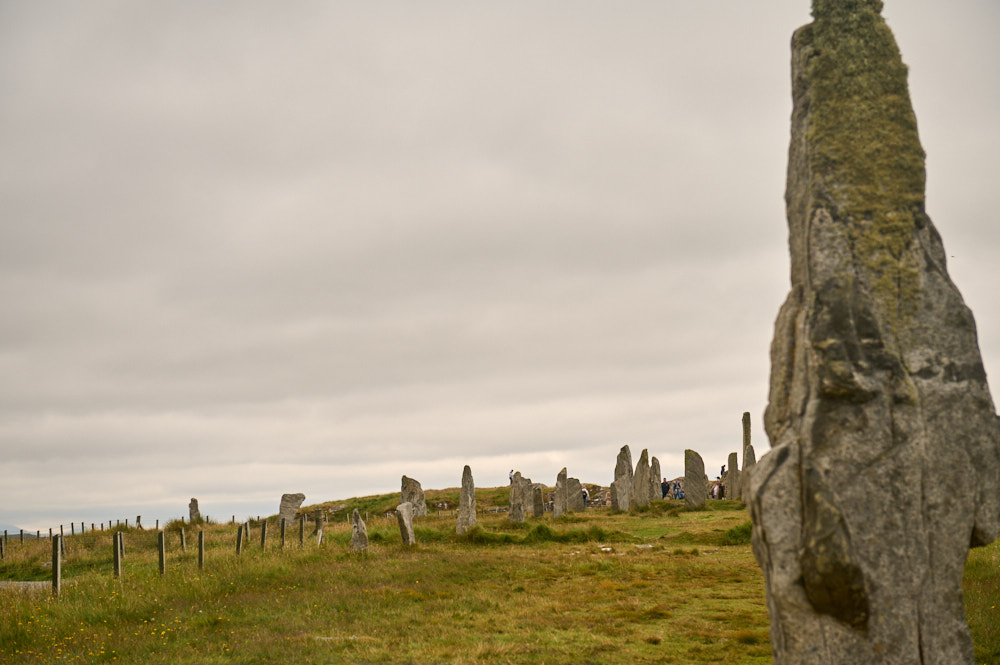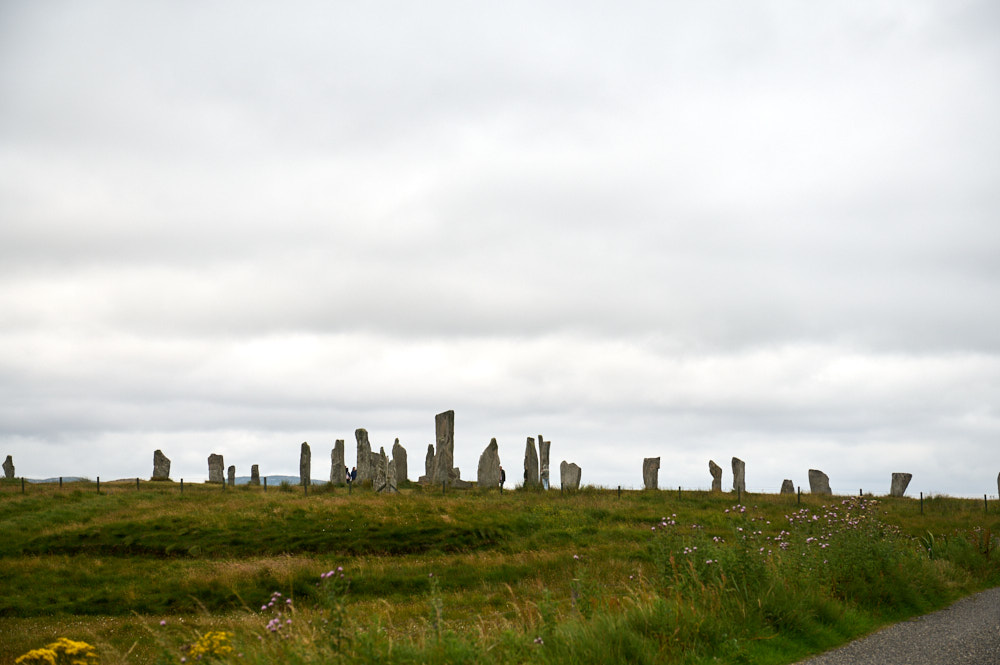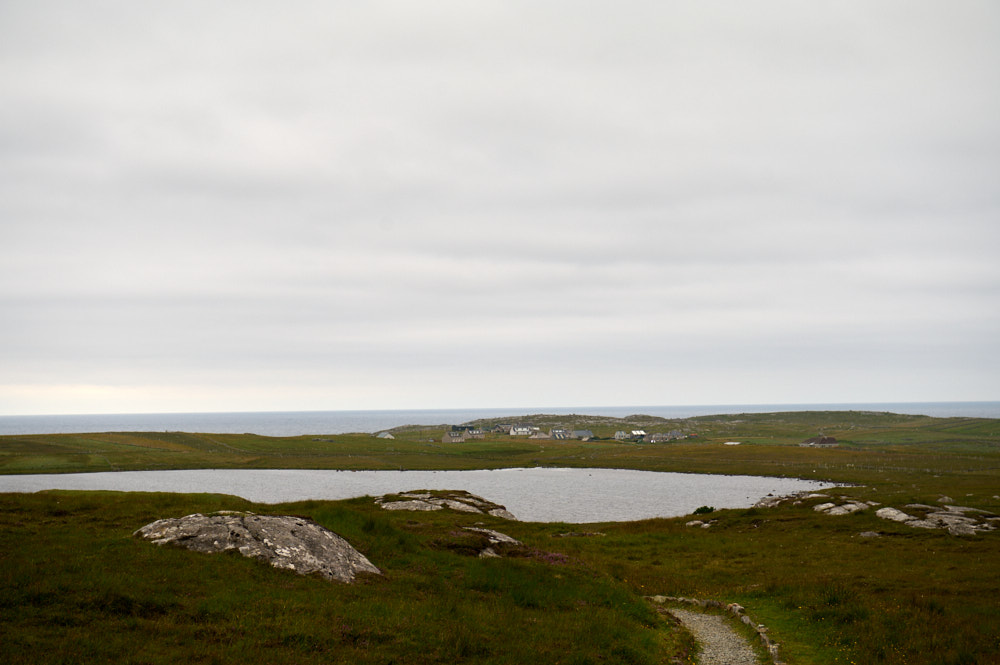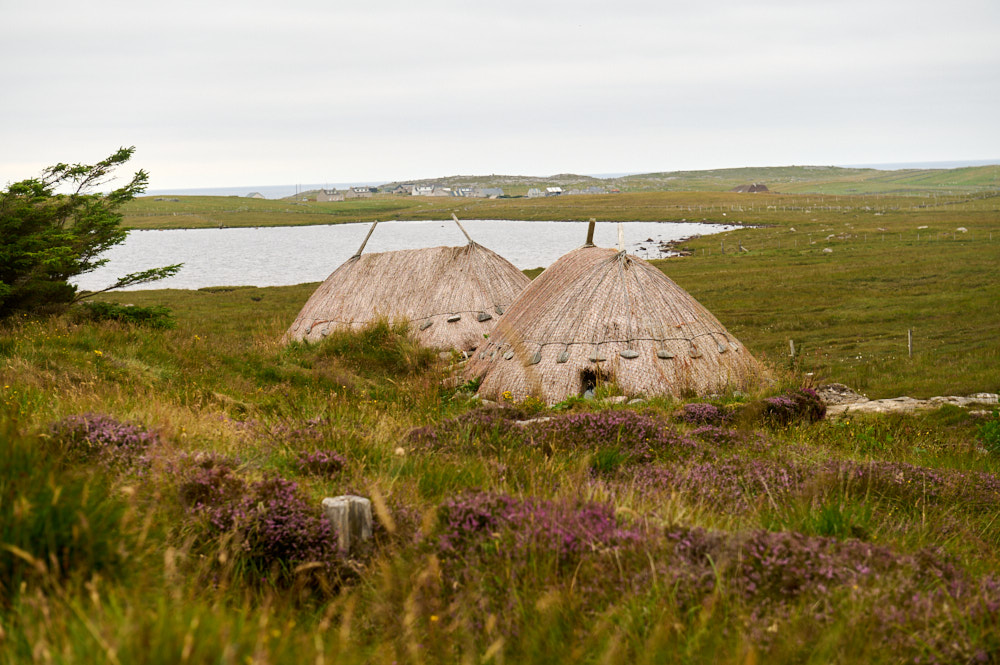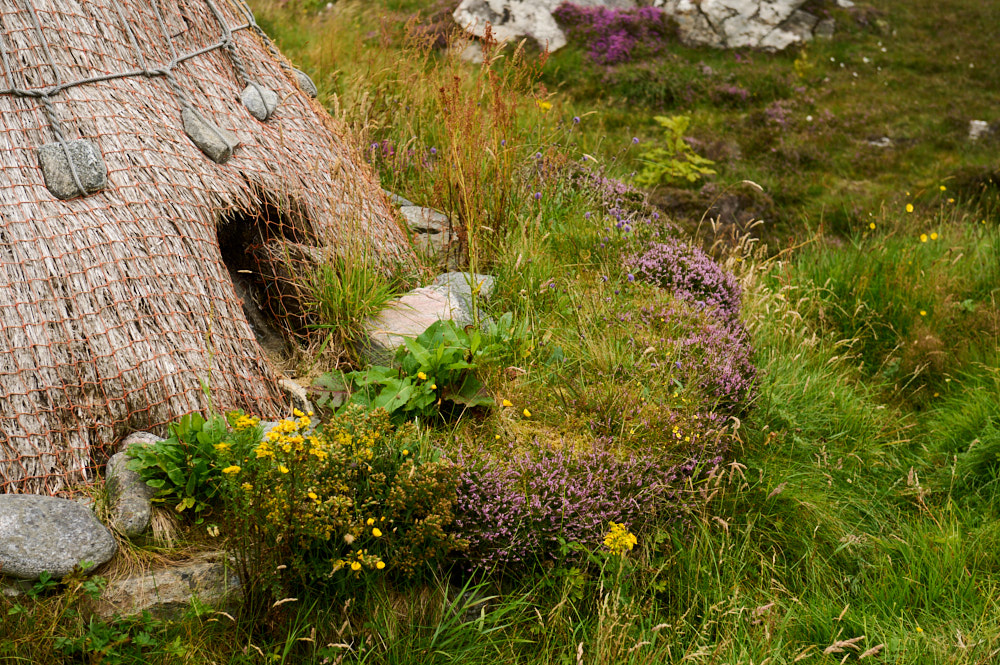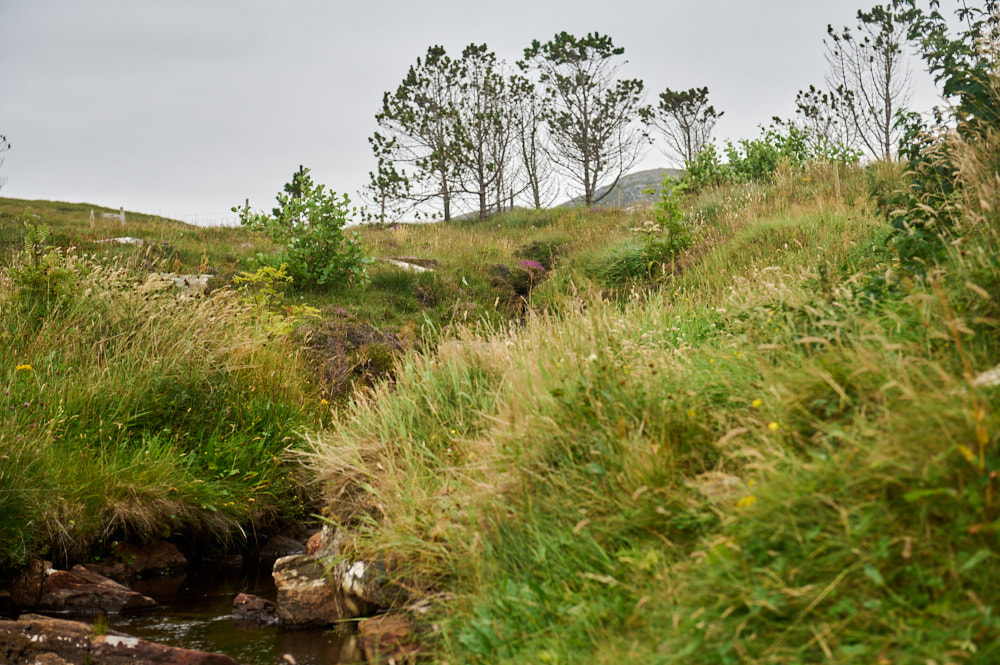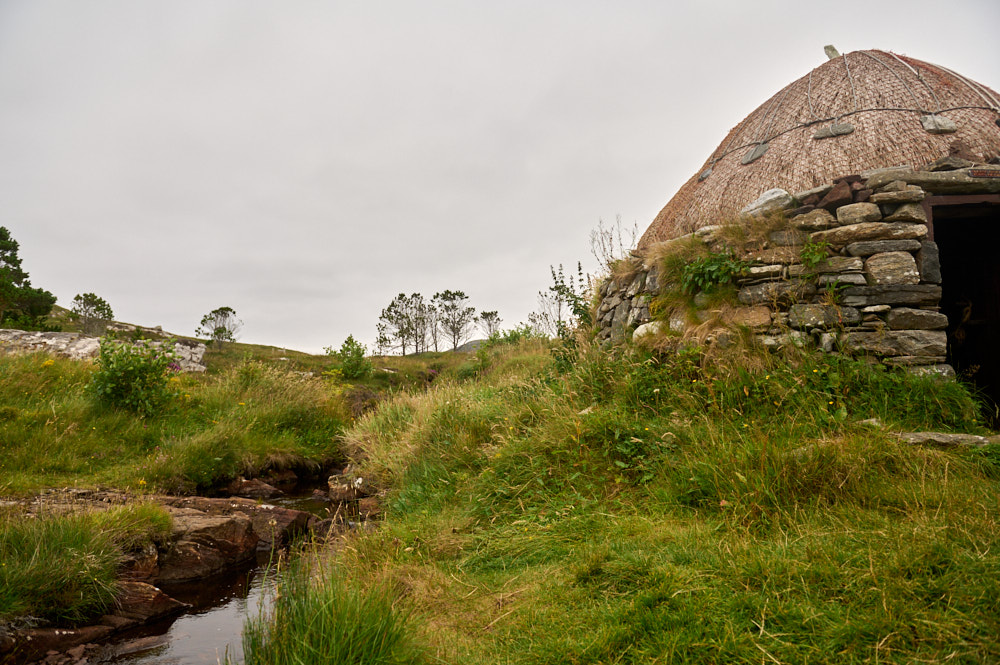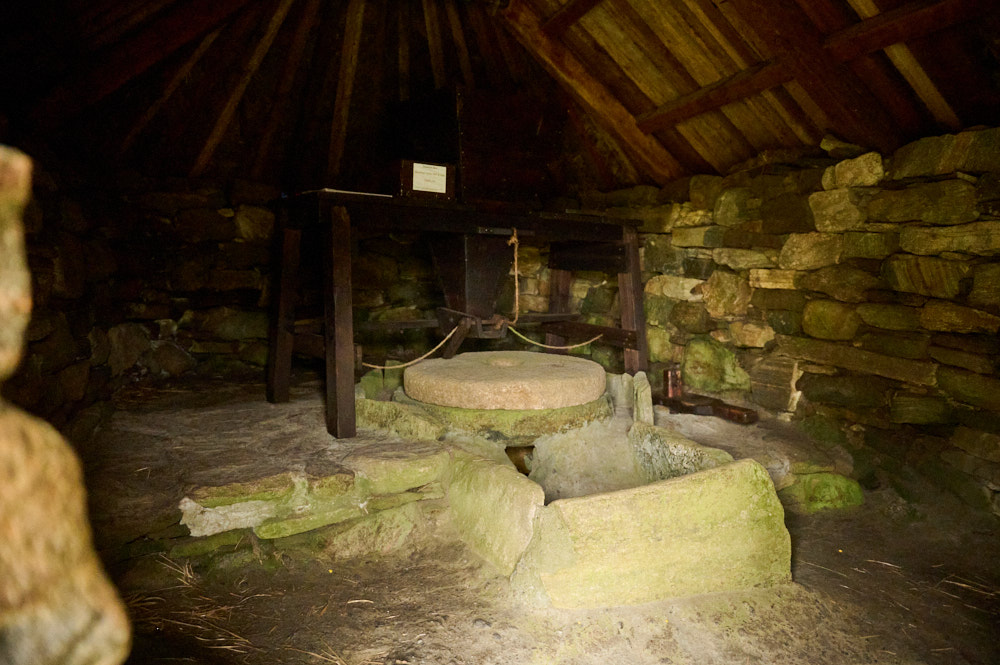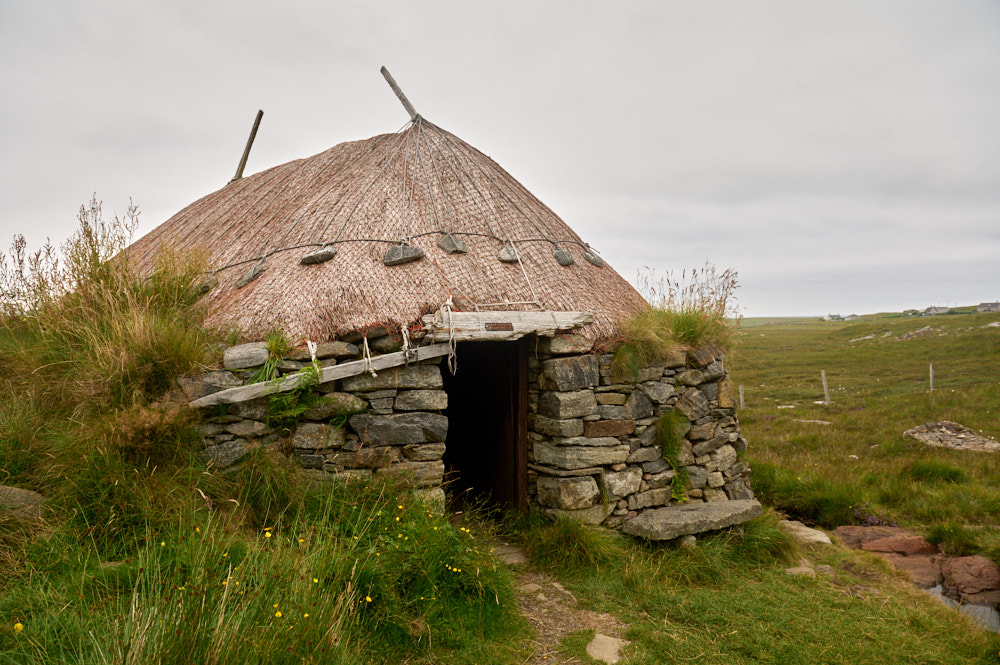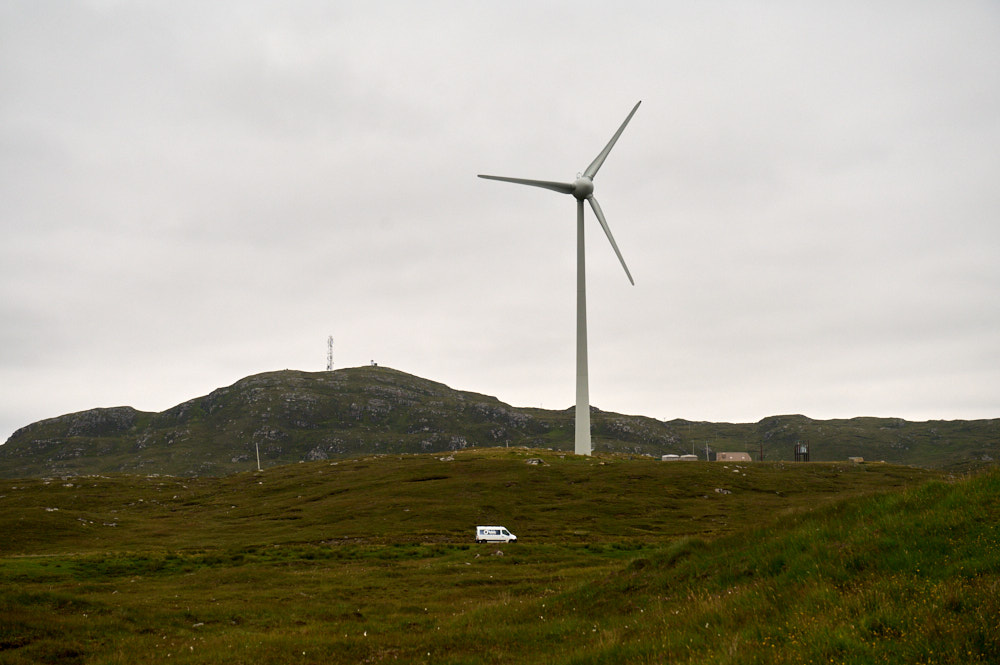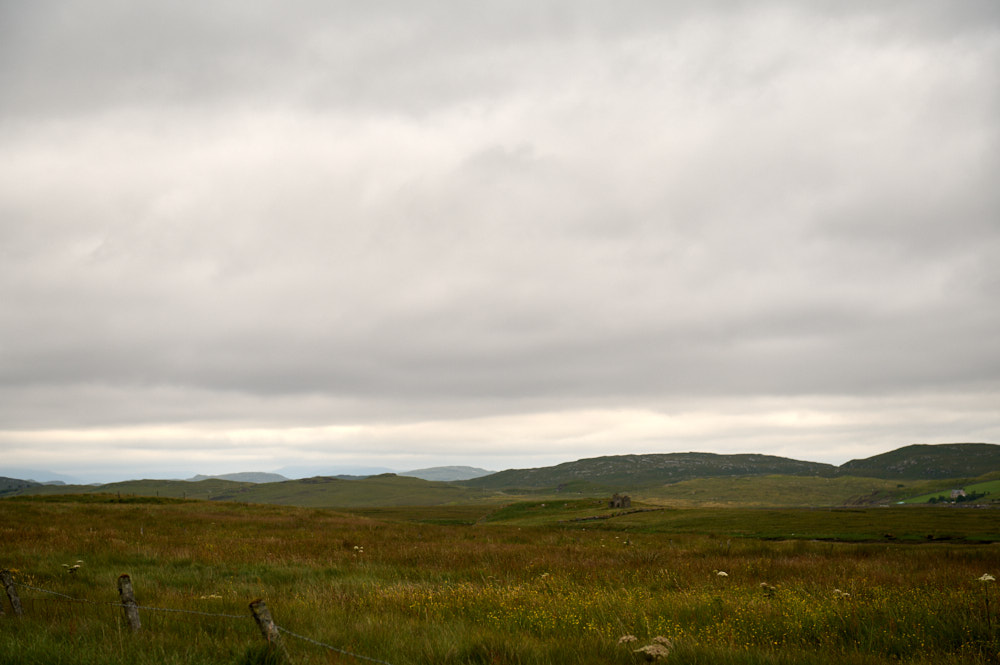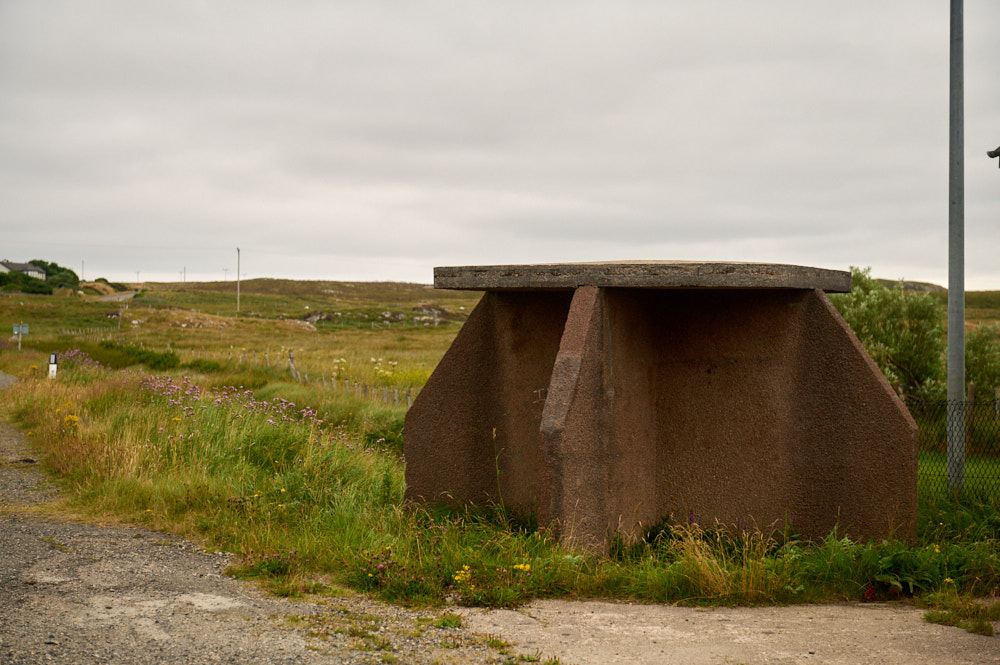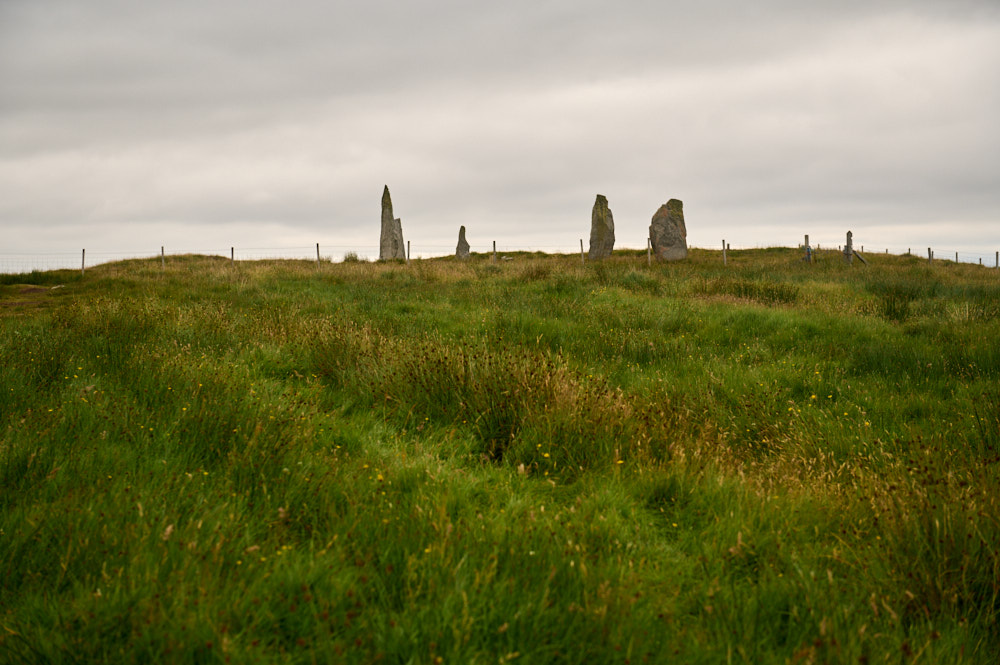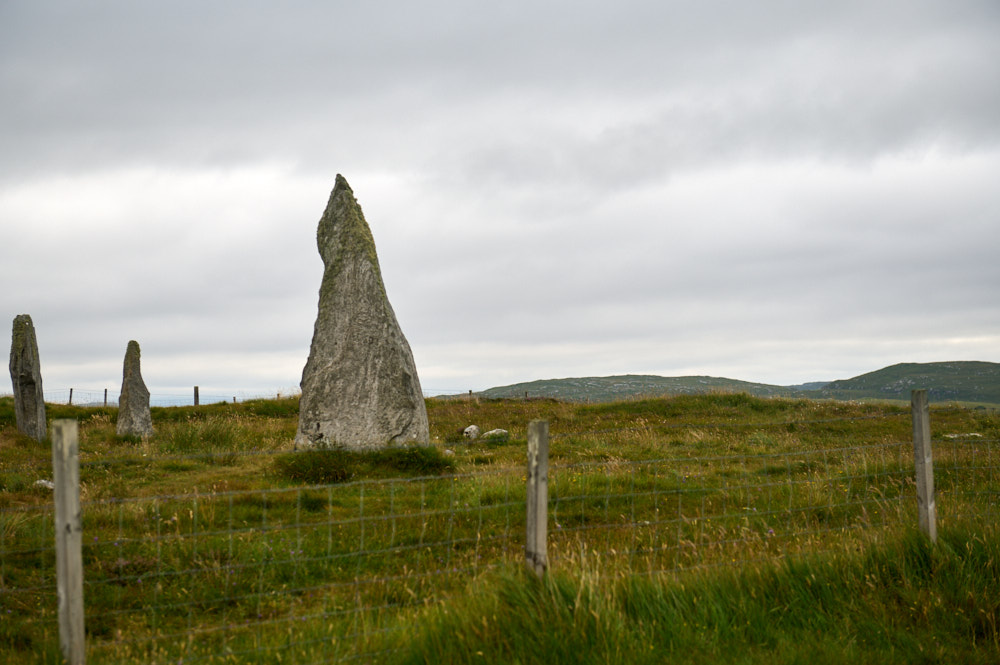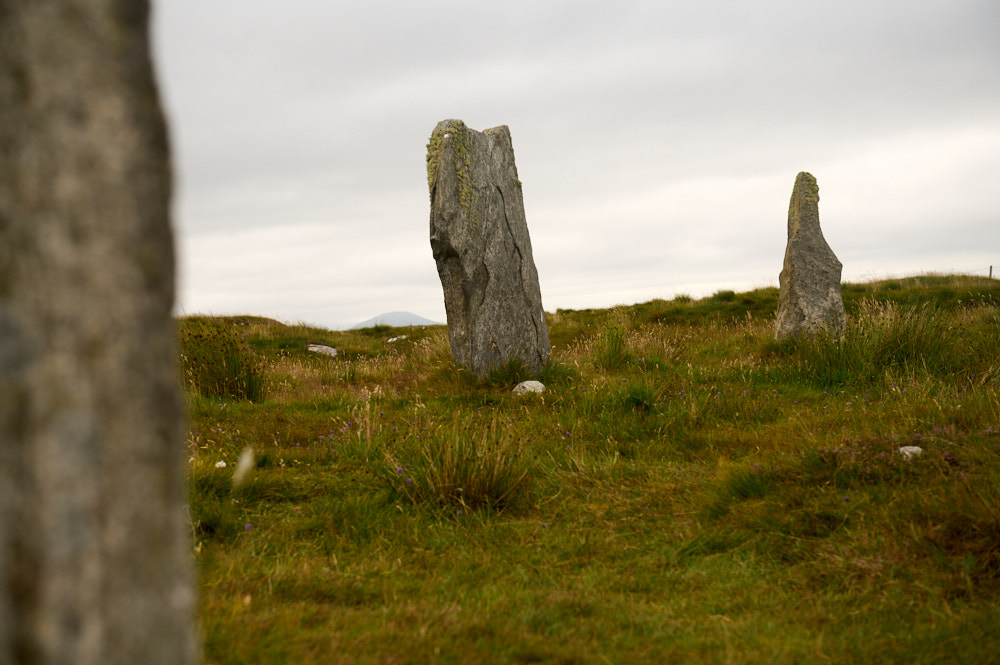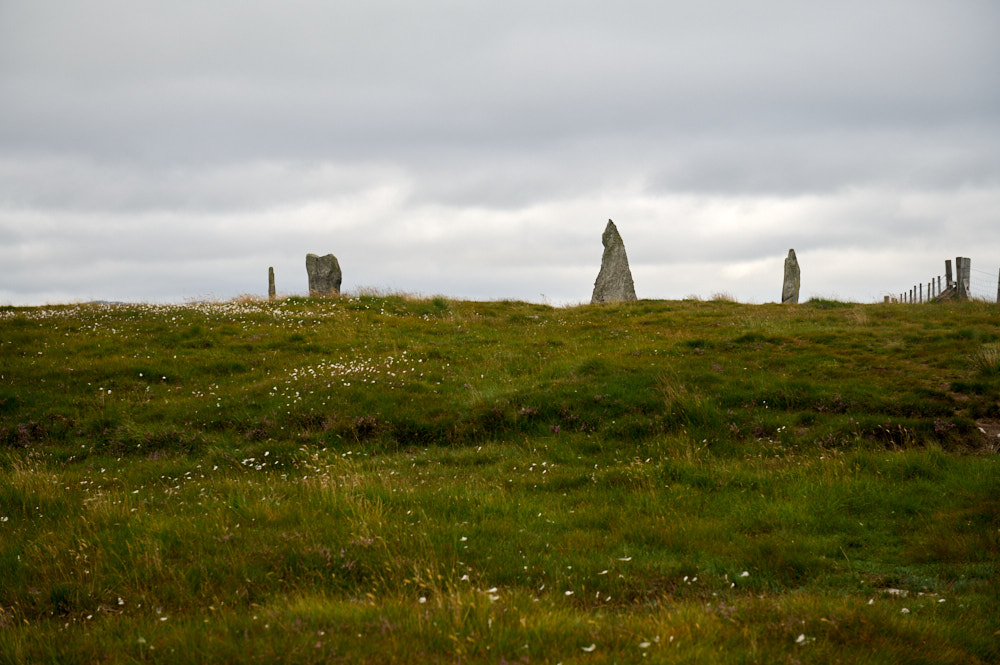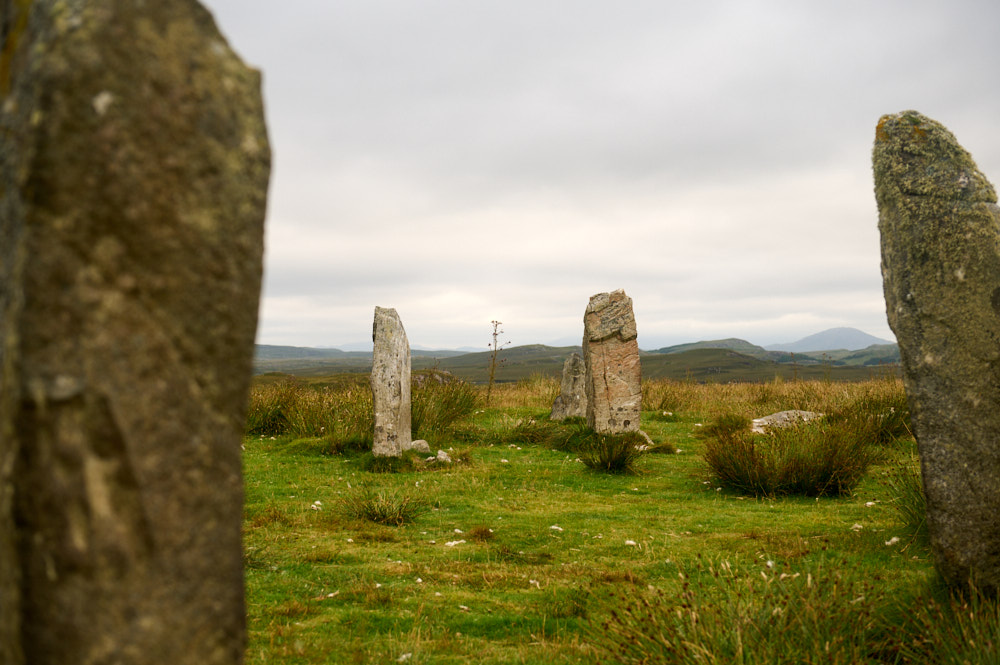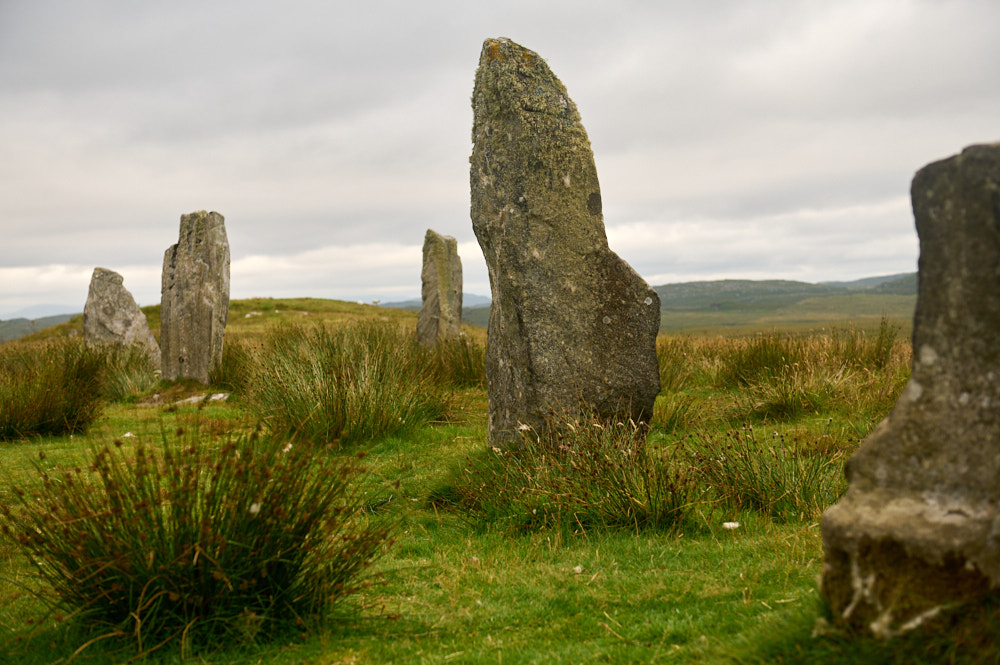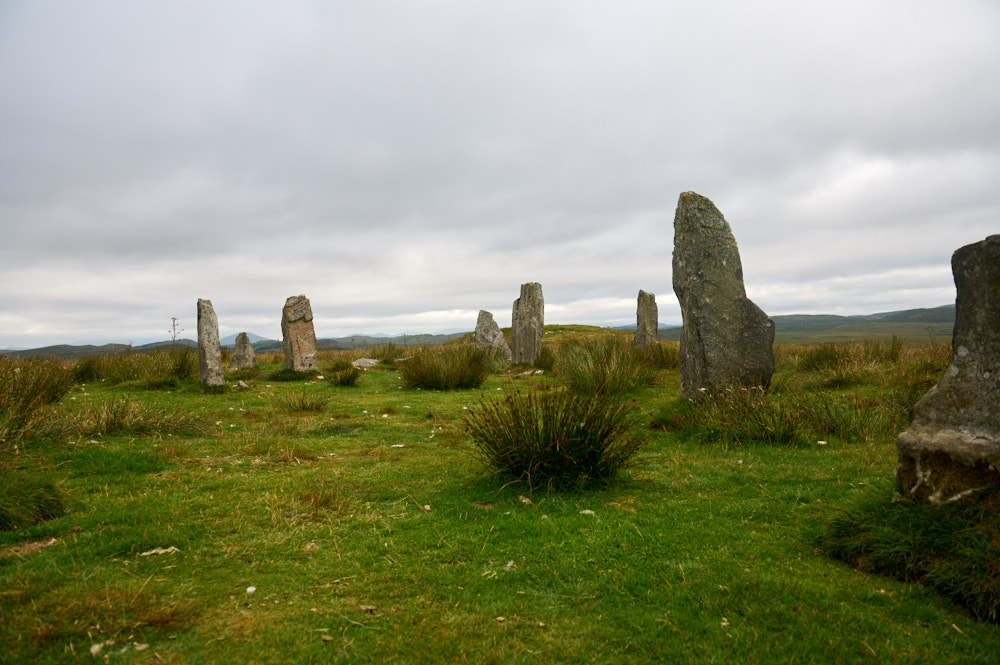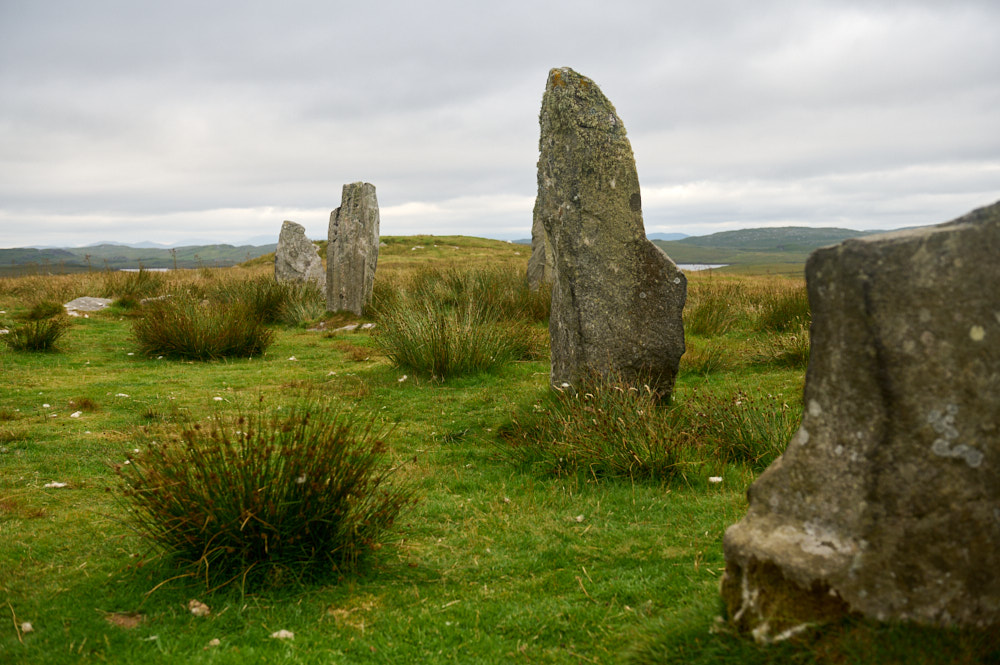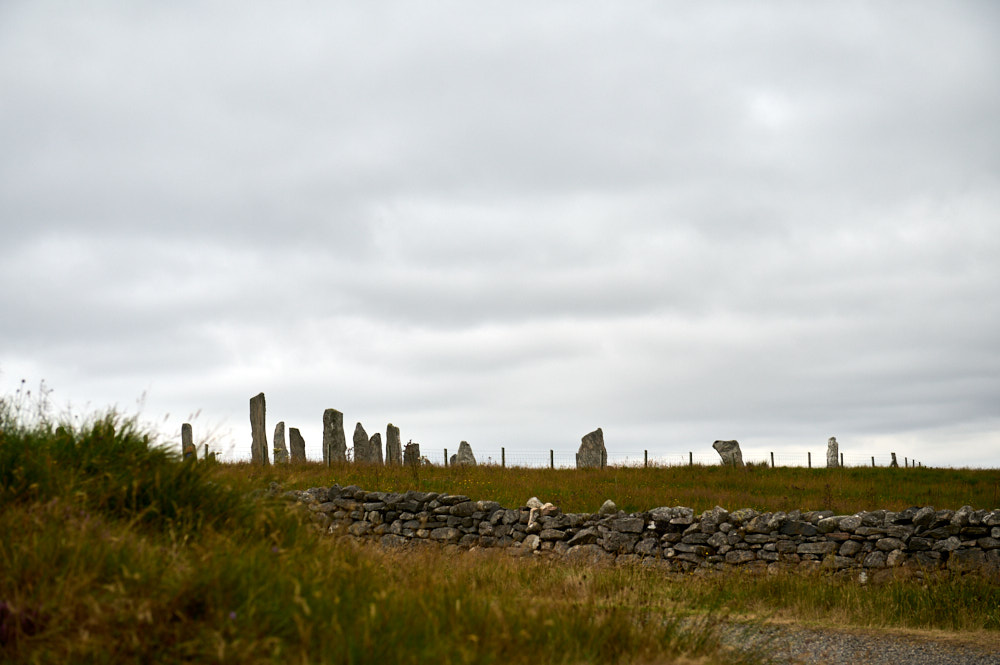
Another highlight on the Isle of Lewis – the Standing Stones at Callanish, Calanais – there are actually a few circles close together and it is a lovely little walk to go from the biggest one to a few of the smaller circles.

View while walking towards Callanish No I – the big one. The visitor centre was closed on that day, so I walked right towards the standing stones.
The Calanais Standing Stones (or Callanish in its anglicised form) is a cruciform shaped stone circle, erected 5000 years and standing the elemental weather of the Outer Hebrides, there is much mystery surrounding their inception. (Visit Scotland)
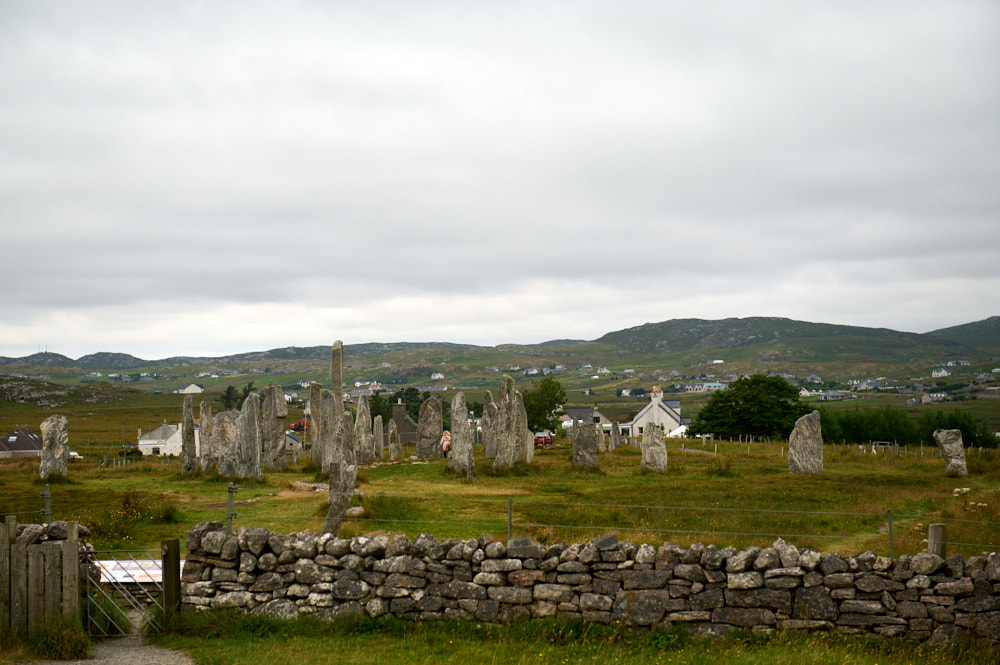
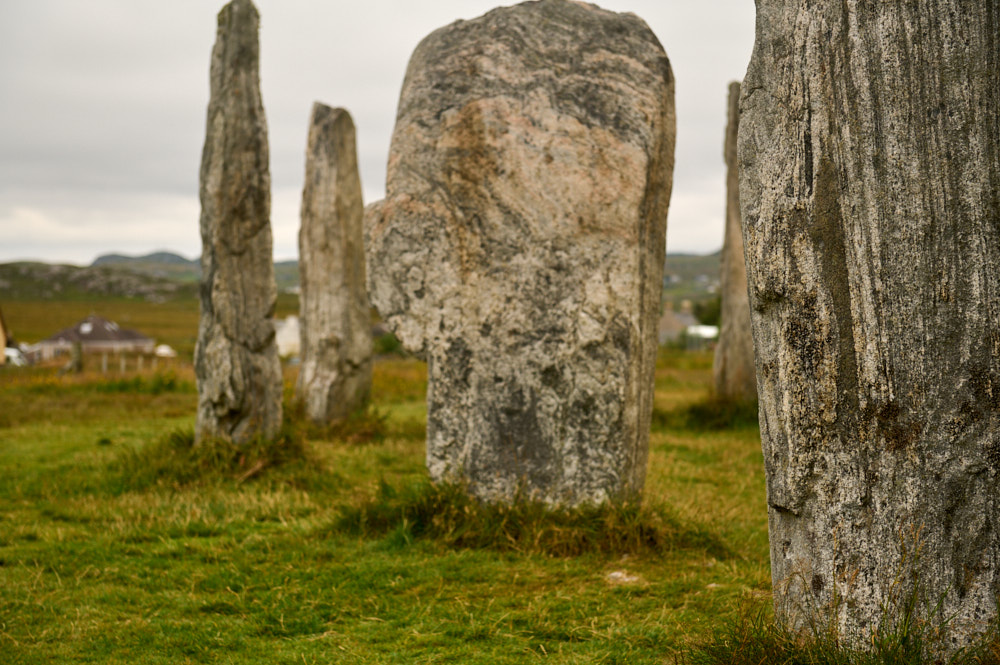
The Callanish standing stones are a cross-shaped stone setting about 5000 years old, older than England’s Stonehenge monument. It was used at least for 2000 years for ritual activity, even though we don´t know the exact kind of activity.
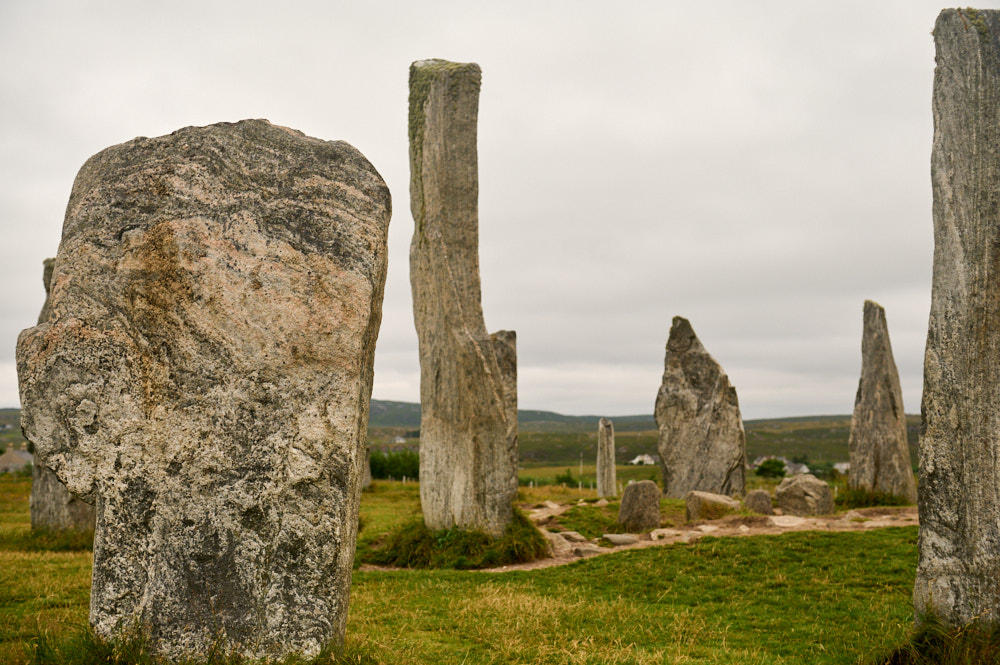
It might have been a kind of astronomical observatory. Erected between 2900 and 2600 BC – then used for around 2000 years until the area inside the circle was levelled and the site gradually became covered with peat between 1000 and 500 BC.
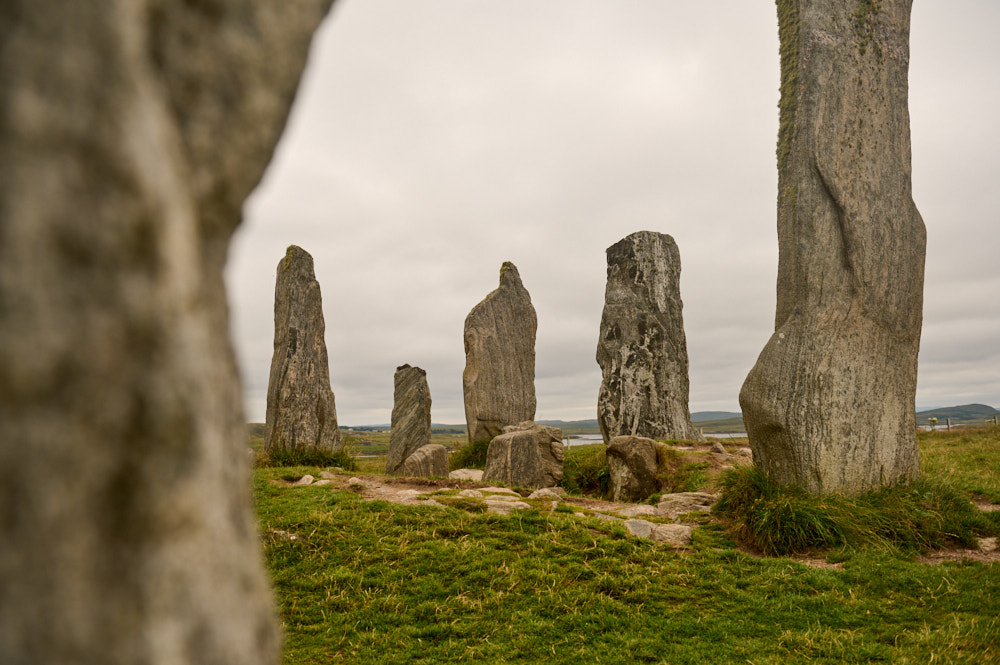
Peat cutting around the site in 1857 revealed the true height of the stones. It’s possible that there’s plenty more archaeology sealed beneath the peat that covers much of the Western Isles.(Historic Enviroment)
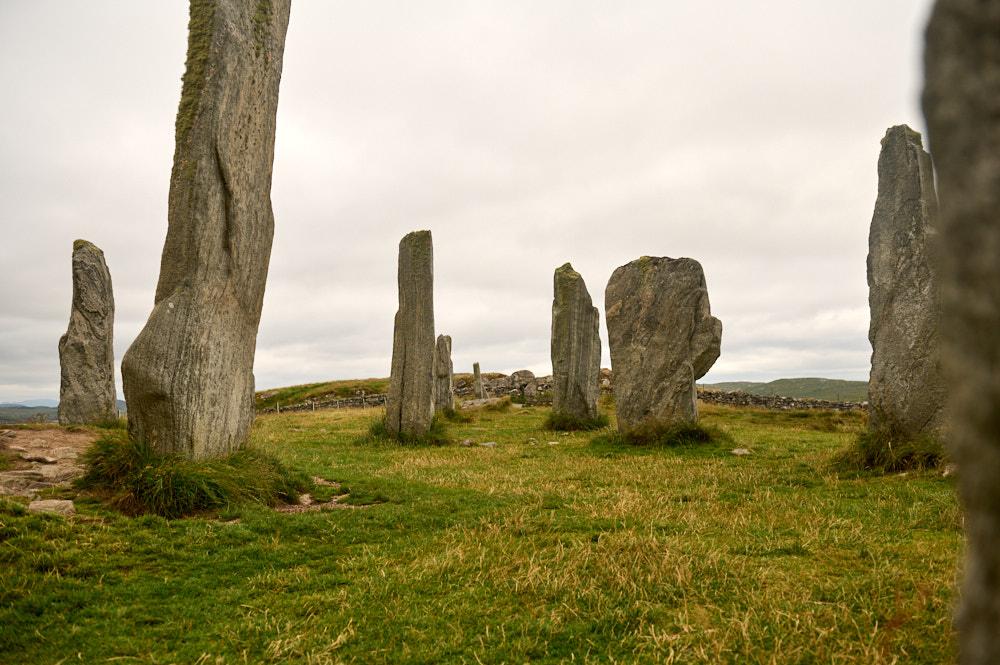
The Callanish stones have some very unique features. A 4,8m tall monolith stands at the heart of the monument, lines of smaller stones lead out to the east, west and south, an 83m long avenue runs to the north and there is a small chambered tomb within the stone circle.

The stones are set in a prominent place, clearly visible from land and sea. They are surrounded by at least 11 smaller stone circles, some of them much younger than the nig one. The complex was used over many centuries.
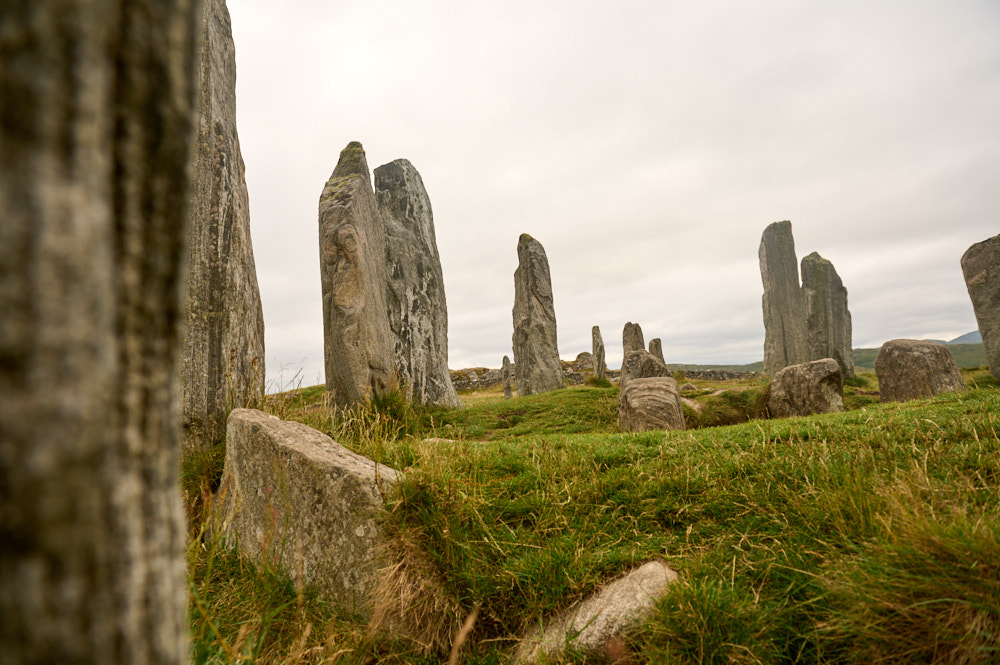
The Western Isles would have been a lot warmer 5,000 years ago, and food and wildlife were plentiful. The extensive ritual landscape around of which Calanais is a part, speaks of a thriving and sophisticated society. (Historic Enviroment)
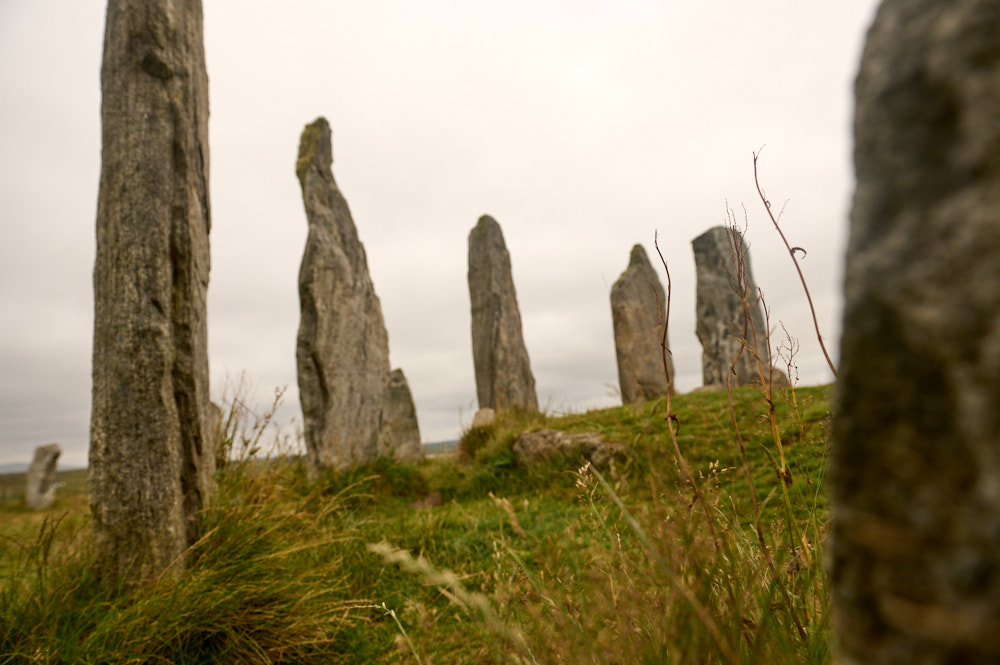
The form of the site and the artefacts found during excavation also show that this community was part of a wider culture which involved the construction of earthen enclosures known as henges and impressive circles of timber or stone. (Historic Enviroment)
